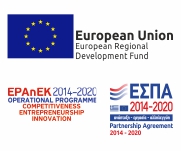For more than three decades, SMS has been the backbone of mobile communication. From the first “Merry Christmas” text in 1992 to today’s enterprise-scale messaging campaigns, traditional telco messaging has proved remarkably resilient. Yet the past decade has witnessed the meteoric rise of Over-The-Top (OTT) applications —WhatsApp, Viber, Telegram, WeChat, and many others — that bypass telco infrastructure, offering richer, app-based messaging experiences.
Madrid became the stage for a milestone chapter in Cytech’s journey this September. From the 16th to the 18th of September 2025, our team joined the global messaging community at the Wholesale World Congress (WWC), while on the 16th of September we proudly stood among the industry’s finest at the 3rd Antonio Meucci Awards (AMA). It was a week that combined innovation, recognition, and the reaffirmation of Cytech’s commitment to shaping the future of telecom software.
Software, for most people means lines of code, frameworks, and technologies. Yet in reality, the element that makes the real difference is not only technical excellence but trust. A piece of software may be well-written and fast, but if it does not inspire confidence, it will not survive in the long run.
The telecom industry is a fast-paced market where agility is key. Cloud messaging for startups is a game-changer for emerging players, offering a secret weapon to compete with established giants. This article explains how these tools provide instant scalability, global reach, and significant cost savings, freeing startups to focus on what matters most: innovation and growth.
August may slow life down, but telecom and mobile messaging keep moving. Discover how networks adapt during the holiday season to keep travelers connected with timely, personalized communications.
The telecommunications sector is undergoing a fundamental restructuring—abandoning closed, proprietary architectures and embracing open, interoperable, and software-defined ecosystems. At the heart of this transformation is Open RAN (Radio Access Network): a technological and strategic approach that aims not only to change how networks are built and operated but also to redefine power structures, innovation models,...
For many, blockchain is still closely associated with cryptocurrencies and high-risk markets. However, this technology is rapidly evolving and is now at the center of discussions across sectors such as healthcare, logistics, and financial services. One domain that is also beginning to show serious interest is telecommunications. As telecom providers strive to innovate, automate critical operations, and manage increasingly complex ecosystems, blockchain is emerging as a potential solution. But is it a real opportunity with tangible value or just another tech trend that will soon fade away?
mobile2025-07-04
Cytech Mobile Named Top 3 Finalist at the Antonio Meucci Global Telco Awards 2025 – Powered by mCore!
Cytech Mobile has proudly been named a Top 3 finalist in the Best Wholesale Messaging Platform category at the Antonio Meucci Global Telco Awards 2025, thanks to its cutting-edge mCore A2P wholesale platform.
The telecoms industry is changing rapidly. As technological demands grow and competition intensifies, more and more companies are moving toward mergers, acquisitions, and strategic alliances. This trend of consolidation is reshaping the global market and impacting all types of providers—from multinational giants to small, local businesses. While for large companies the logic behind mergers is often straightforward—cost savings, service expansion, and profit growth—the consequences for smaller providers are more complex. And yet, within these challenges, there are opportunities.
mobile2025-06-06
What Telcos Can Learn from OTT Players: Lessons in Agility, Experience, and Innovation
The telecommunications industry is at a critical crossroads. Although operators own the infrastructure, manage the networks, and serve millions of subscribers, they now face competition not only from each other but also from fast, agile, and technologically advanced Over-the-Top (OTT) providers that have redefined the meaning of digital communication, entertainment, and customer relationships. From WhatsApp and Netflix to Zoom and Spotify, OTT players have managed to capture user attention and a significant share of the market—without investing in physical infrastructure. However, they’ve offered flexible, personalized, and well-designed services, leveraging the very networks of telecom operators. This role of the "passenger" may seem unfair to traditional telcos, but the truth is simple: OTTs are not the enemy—they are the model. To survive and thrive in the new digital era, telecom organizations must move beyond outdated operational models and adopt the mindset, tools, and strategies that elevated OTT players to market dominance.










